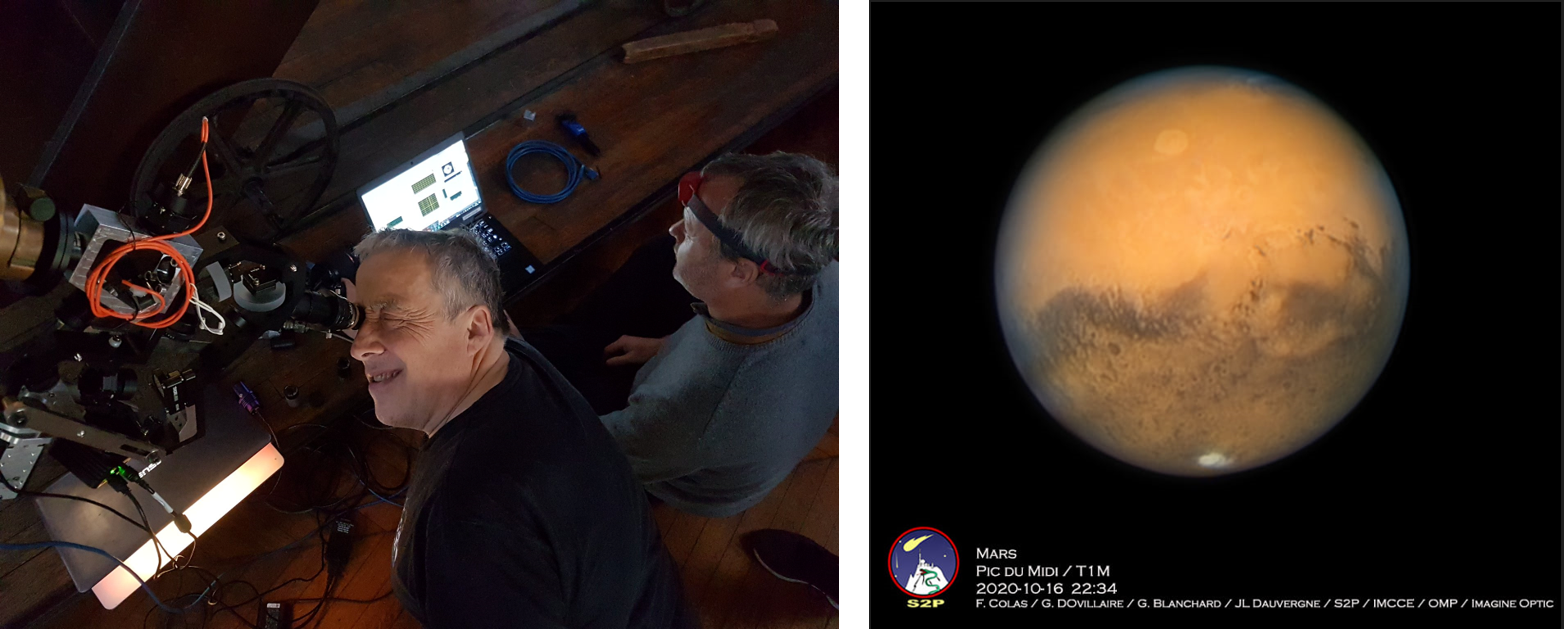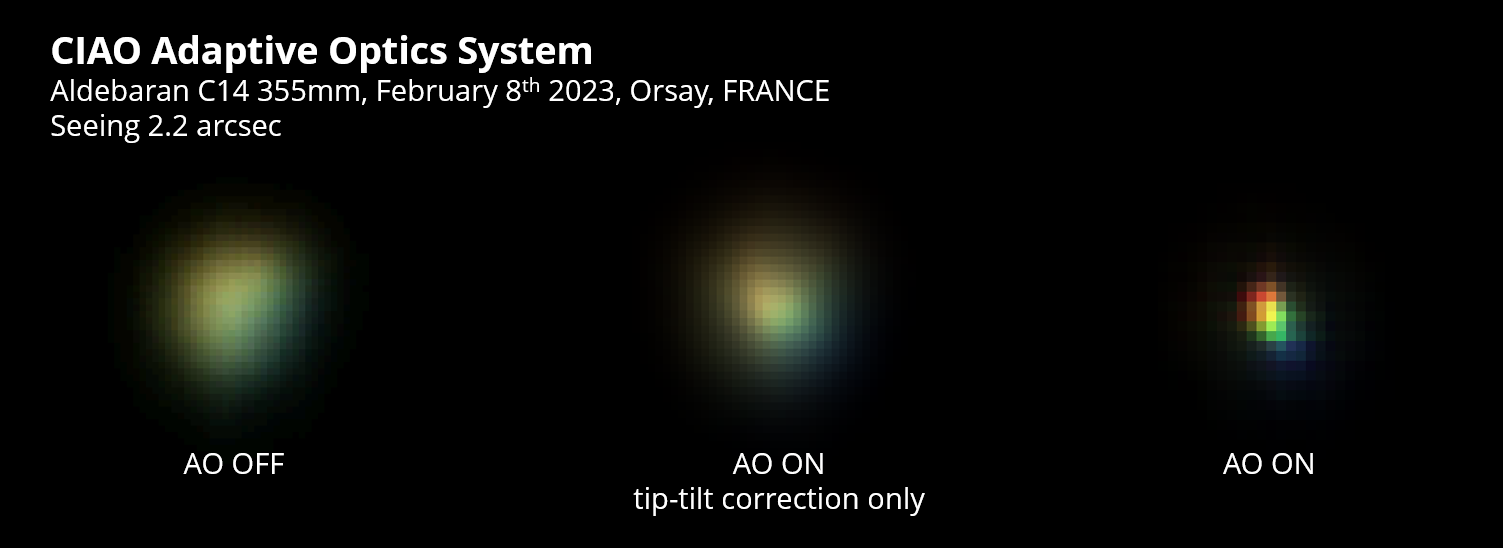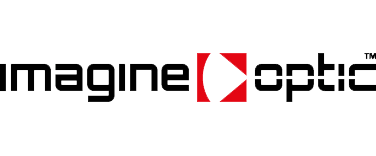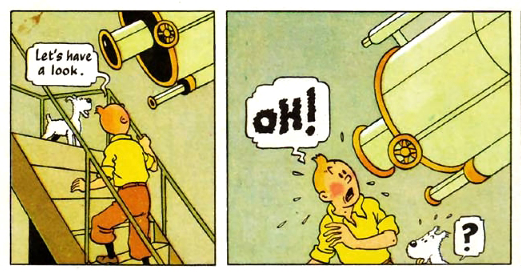Adaptive Optics Space Optics –
Incredible as it may seem, the famous reporter Tintin was already thinking, back in 1941 in L’étoile mystérieuse, Hergé, that telescope-based images could be greatly improved thanks to adaptive optics!
Adaptive optics for Free Space Optics (FSO) applications is a technique that couples a deformable mirror, a wavefront sensor and a calculator. Together, these components enable the wavefront of an incoming beam, and therefore its phase, to be modified very rapidly. Adaptive Optics (AO) has been developed in the 80s to remove the effect of air turbulences and get diffraction limited images from ground-based telescopes. Almost all large telescopes dedicated to high-resolution imaging have now an AO system. Imaging of exoplanets is the new goal for the new generation of AO system for astronomy.
AO is now used in many different applications such as:
Adaptive Optics for Ultra-High Intensity Laser: Imagine Optic ILAO STAR deformable mirrors are optimized for this application, where stability and large diameters are more important than speed. The deformable mirror removes residual static aberrations due to misalignment and thermal effects.
Adaptive Optics for Ophthalmology: Imagine Eyes RTX1 can acquire high-resolution images of the retina in vivo. AO is needed to remove all aberrations originating from the patient’s eye.
Adaptive Optics for Microscopy: Imagine Optic mu-DM deformable mirror has been designed to meet the specific needs of bio imaging (stability, dynamic, accuracy). Aberrations, particularly present when the focusing plane is deep in the sample, are compensated for to restore optimum resolution and signal intensity.
Adaptive optics Space Optics
AO for high resolution imaging
A couple of years ago, a bunch of geeks (passionate amateur astronomers and AO experts) at Imagine Optic launched a project codename “CIAO” to validate they can build a simple, very easy-to-install setup, AO system capable of removing all static aberrations (mirrors misalignment, gravity and thermal effects) and reducing the effect of air turbulence in order to acquire better quality images.
What we got was a Plug & Play Adaptive Optics accessory with great performance at an incredible price point!

Left: Some of us actually see the AO effect
Right: With a one-meter diameter telescope and no aberrations, we can reveal details of Mars that have never been seen from Earth
The CIAO Adaptive Optics System has now been tested on many kinds of telescopes (200mm up to 1.3m diameter, f/22 to f/8 aperture) to see how images are enhanced by this affordable system.
For instance, we were able to:
– see the Airy spot on a 1.3m diameter telescope with a seeing of 1.8 arcsec.
– prove that with a very bad seeing of 2.2 arcsec, a tip-tilt correction is surely not enough on a 355mm diameter telescope to get diffraction limited images as seen on image below:

The effect of atmospheric refraction is clearly visible on the image obtained with AO
AO for single mode fiber injection | Adaptive Optics Space Optics
CIAO efficiency has been evaluated for applications requiring the light received by a telescope to be injected into a single-mode fiber (Free Space Optics, satellite communication, Stellar interferometry, etc.). A first successful demonstration has already been conducted in the visible spectrum: we have proved that the coupling efficiency is improved and we have obtained an average flux level, at the fiber output, multiplied by a factor of 5. The second phase is now ongoing to establish the performance of a SWIR Adaptive Optics for Free Space Optics system, and the whole Imagine Optic team is fully committed to tackle the challenges of this new upgrade.

Left: AO OFF. Right: AO ON stabilizes the focal spot on the core of an optical fiber
Whether or not you consider yourself an AO geek, do not hesitate to contact us: we’ll be happy to discuss with you what adaptive optics solution for FSO best suits your needs …
Acknowledgments
Many people are involved in this work, all of them must be gratefully thanked: François Colas (IMCCE), Jean-Luc Dauvergne (S2P/Ciel & Espace, YouTube channel), Guillaume Blanchard (ESO), Pierre Guiot and Cateline Lantz (IAS), not forgetting the Imagine Optic teams.

